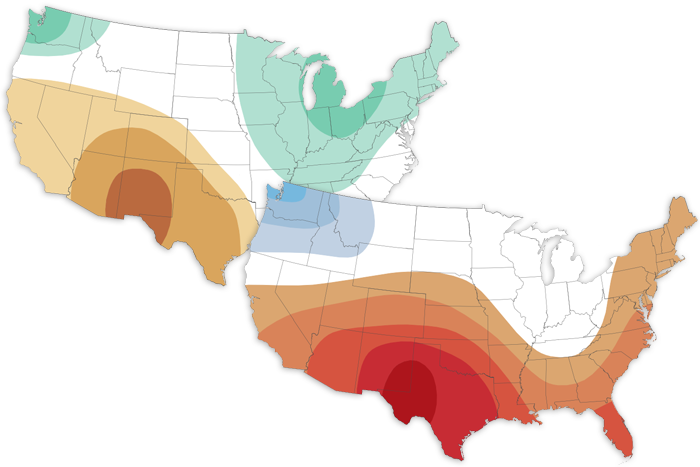Carbon dioxide levels also recorded a big jump.
In many locations, spring snow also melts earlier, reducing summer streamflows.
A new study suggests that fine particulate pollution over the Pacific Northwest could double to triple during late summer to fall by the end of this century under intermediate- and low-mitigation climate scenarios. Even with strong mitigation efforts, pollution in the western US may increase ~50 percent by mid-century during August and September.
Eight new postdoctoral fellows are commencing cutting-edge research projects that will contribute innovative climate science to the research community and to NOAA’s mission. These fellows are the new 2022-2024 class of NOAA Climate and Global Change (C&GC) Postdoctoral Fellows, supported by NOAA Climate Program Office (CPO) and selected by the University Corporation for Atmospheric Research (UCAR).

NOAA's April 2022 Climate Outlook favors a warm month across the southern and eastern United States, a dry month across the Southwest, and a wet month for the Great Lakes and Northeast.
For women’s history month, NOAA focuses a spotlight on climate modeler Elena Shevliakova.
A newly released report highlights NOAA’s many notable scientific accomplishments from 2021. The report details research on how climate change could impact West Coast fisheries, and gathering information critical to improving hurricane forecasts, among more than 60 stories.
In a recent study published in the journal Coral Reefs, scientists at NOAA’s Atlantic Oceanographic and Meteorological Laboratory (AOML) found that staghorn coral (Acropora cervicornis) fragments exposed to an oscillating temperature treatment were better able to respond to heat stress caused by warming oceans.
A new study uses GFDL’s SPEAR seasonal-to-decadal forecast system to produce multi-seasonal atmospheric river frequency forecasts with predictive skill at least nine months in advance.
Organic aerosols (OAs) comprise a significant fraction of the Arctic aerosol mass, helping modulate the radiative balance of the Arctic atmosphere. A new study sheds light on composition and sources of OAs. While OAs in the Arctic are primarily influenced by anthropogenic emissions, mostly from Eurasia in winter, natural emissions largely take over in summer.